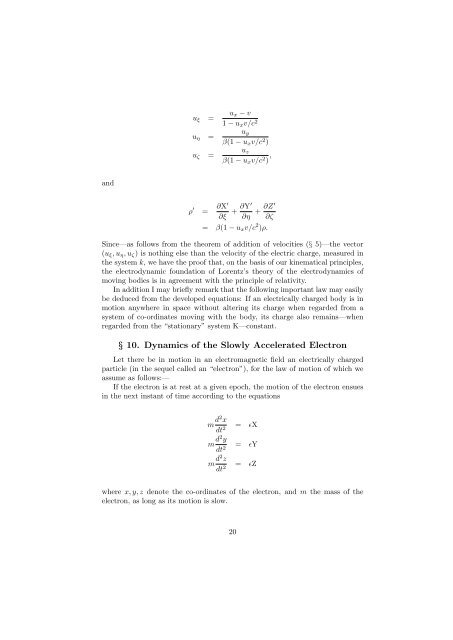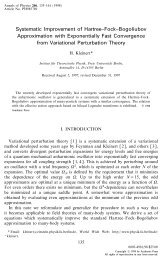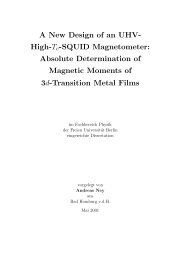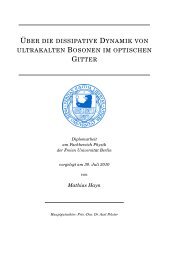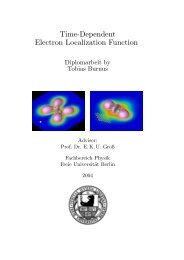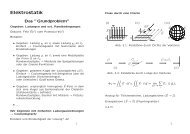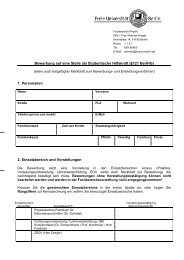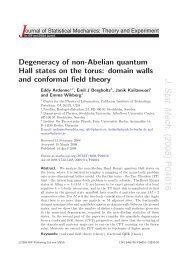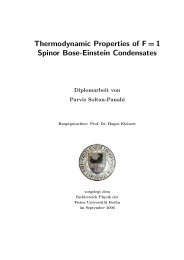Einstein's 1905 paper
Einstein's 1905 paper
Einstein's 1905 paper
Create successful ePaper yourself
Turn your PDF publications into a flip-book with our unique Google optimized e-Paper software.
u ξ =<br />
u η =<br />
u ζ =<br />
u x − v<br />
1 − u x v/c 2<br />
u y<br />
β(1 − u x v/c 2 )<br />
u z<br />
β(1 − u x v/c 2 ) ,<br />
and<br />
ρ ′ = ∂X′<br />
∂ξ + ∂Y′<br />
∂η + ∂Z′<br />
∂ζ<br />
= β(1 − u x v/c 2 )ρ.<br />
Since—as follows from the theorem of addition of velocities (§ 5)—the vector<br />
(u ξ , u η , u ζ ) is nothing else than the velocity of the electric charge, measured in<br />
the system k, we have the proof that, on the basis of our kinematical principles,<br />
the electrodynamic foundation of Lorentz’s theory of the electrodynamics of<br />
moving bodies is in agreement with the principle of relativity.<br />
In addition I may briefly remark that the following important law may easily<br />
be deduced from the developed equations: If an electrically charged body is in<br />
motion anywhere in space without altering its charge when regarded from a<br />
system of co-ordinates moving with the body, its charge also remains—when<br />
regarded from the “stationary” system K—constant.<br />
§ 10. Dynamics of the Slowly Accelerated Electron<br />
Let there be in motion in an electromagnetic field an electrically charged<br />
particle (in the sequel called an “electron”), for the law of motion of which we<br />
assume as follows:—<br />
If the electron is at rest at a given epoch, the motion of the electron ensues<br />
in the next instant of time according to the equations<br />
m d2 x<br />
dt 2 = ɛX<br />
m d2 y<br />
dt 2 = ɛY<br />
m d2 z<br />
dt 2 = ɛZ<br />
where x, y, z denote the co-ordinates of the electron, and m the mass of the<br />
electron, as long as its motion is slow.<br />
20


